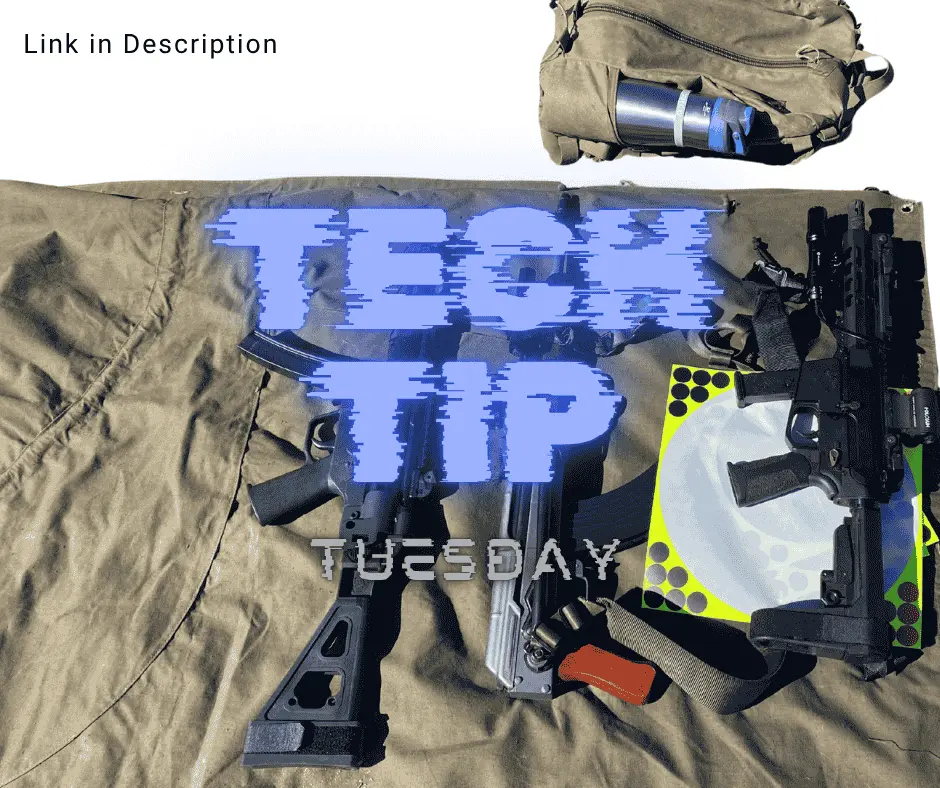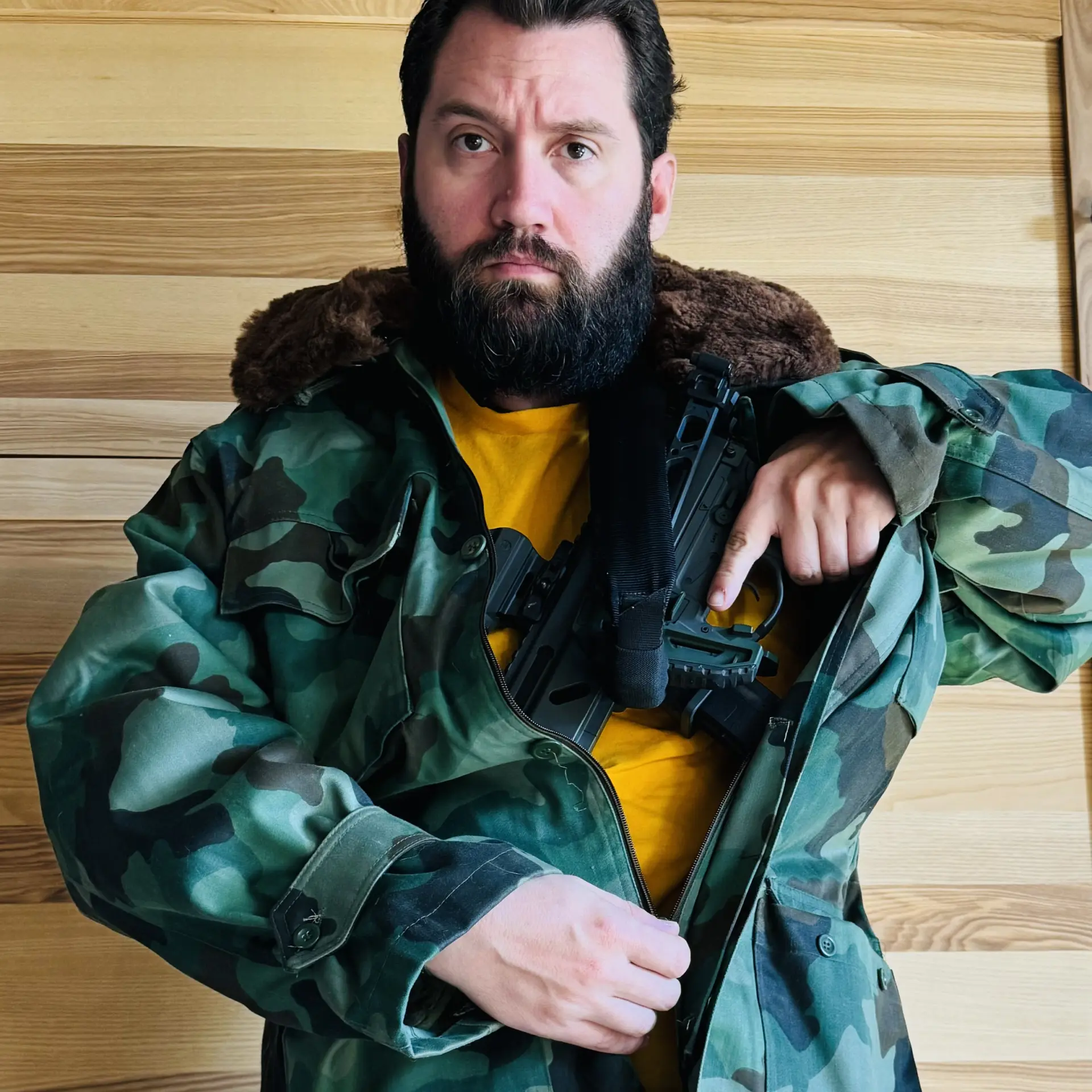
As the temperatures drop and winter approaches, concealed carry enthusiasts face a unique advantage—more options for firearm carry. The addition of jackets and heavier clothing opens up opportunities for carrying larger firearms and using holsters that may not be practical during the summer months. Whether you’re a seasoned carrier or new to winter carry, this is the perfect time to rethink your setup and adapt to the cold-weather wardrobe. Today, we’ll discuss the benefits of winter concealed carry and how to make the most out of this season.
Winter Carry Advantages: More Concealment Options
Winter concealed carry means more layers, and more layers mean more concealment. With a jacket or coat, you can carry larger firearms without worrying about printing (when the outline of your gun is visible through your clothing). Many shooters struggle with concealment in the warmer months, where light clothing limits carry options to smaller, more compact firearms. However, winter opens the door to carrying full-size pistols without drawing unwanted attention.
For many concealed carriers, winter is a season of freedom. The extra fabric not only helps conceal a larger firearm but also opens up opportunities for different holster types. The challenge of finding that perfect spot to conceal a gun in summer—without the risk of printing or discomfort—disappears under layers of clothing. Whether you want to switch up your carry method or stick with what works year-round, winter gives you more flexibility.
Strong Side Carry for Winter
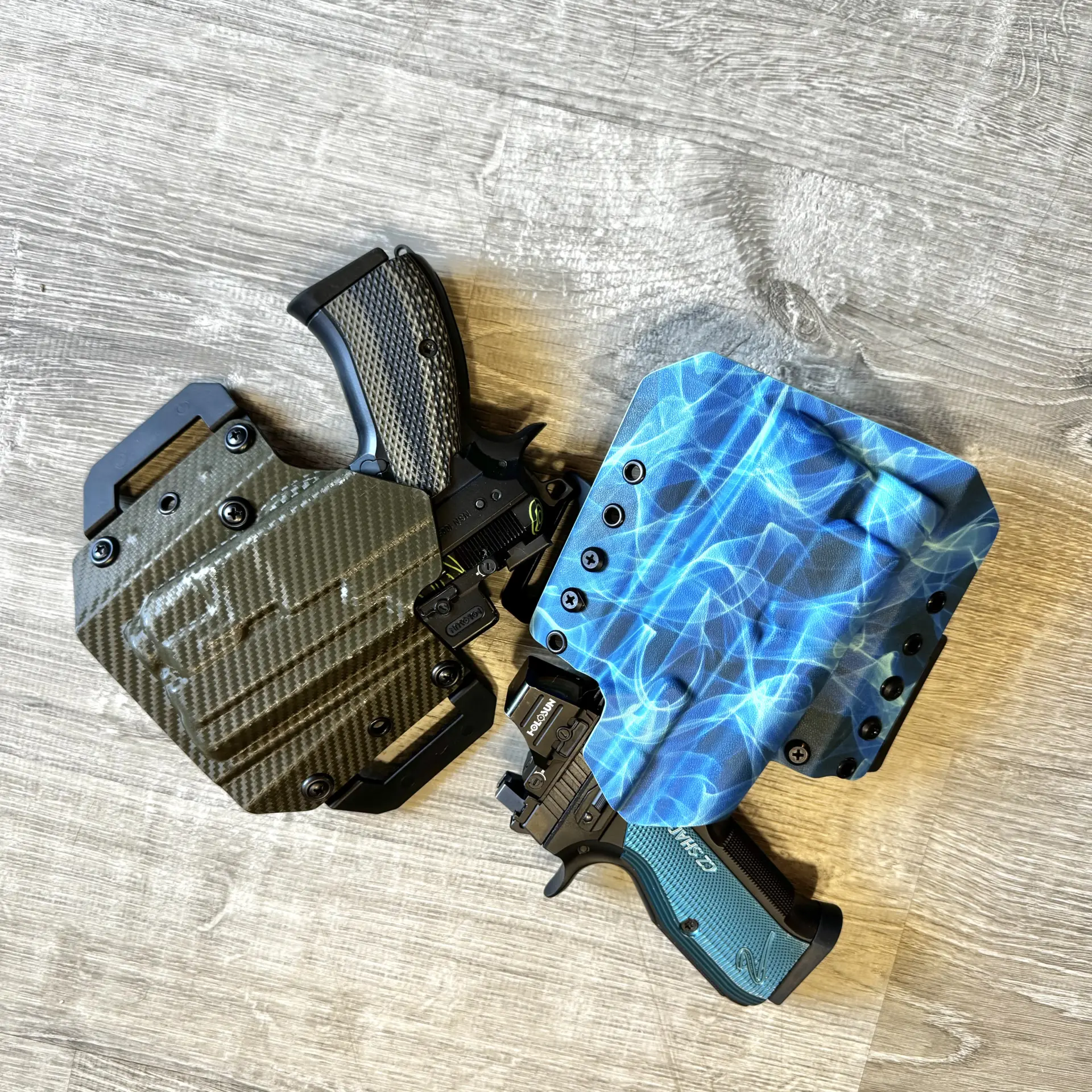
Personally, I find that strong side carry works best for me in the winter. I prefer this carry method, especially when using an outside-the-waistband (OWB) holster, because it’s more comfortable with the additional layers I’m already wearing. My go-to setup is a TFirearms-made OWB Kydex holster on my strong side. It’s not only secure but also works perfectly under a jacket. With winter coats offering extra concealment, I can confidently carry a larger firearm on my hip without worrying about the gun printing, even when I move around.
Carrying on the strong side in the winter has additional benefits. Since many jackets or coats are designed to be looser and more forgiving, drawing from an OWB holster is often quicker and more intuitive than during the summer months when lighter fabrics might catch or snag. Plus, it’s easier to access the firearm by simply sweeping your coat aside.
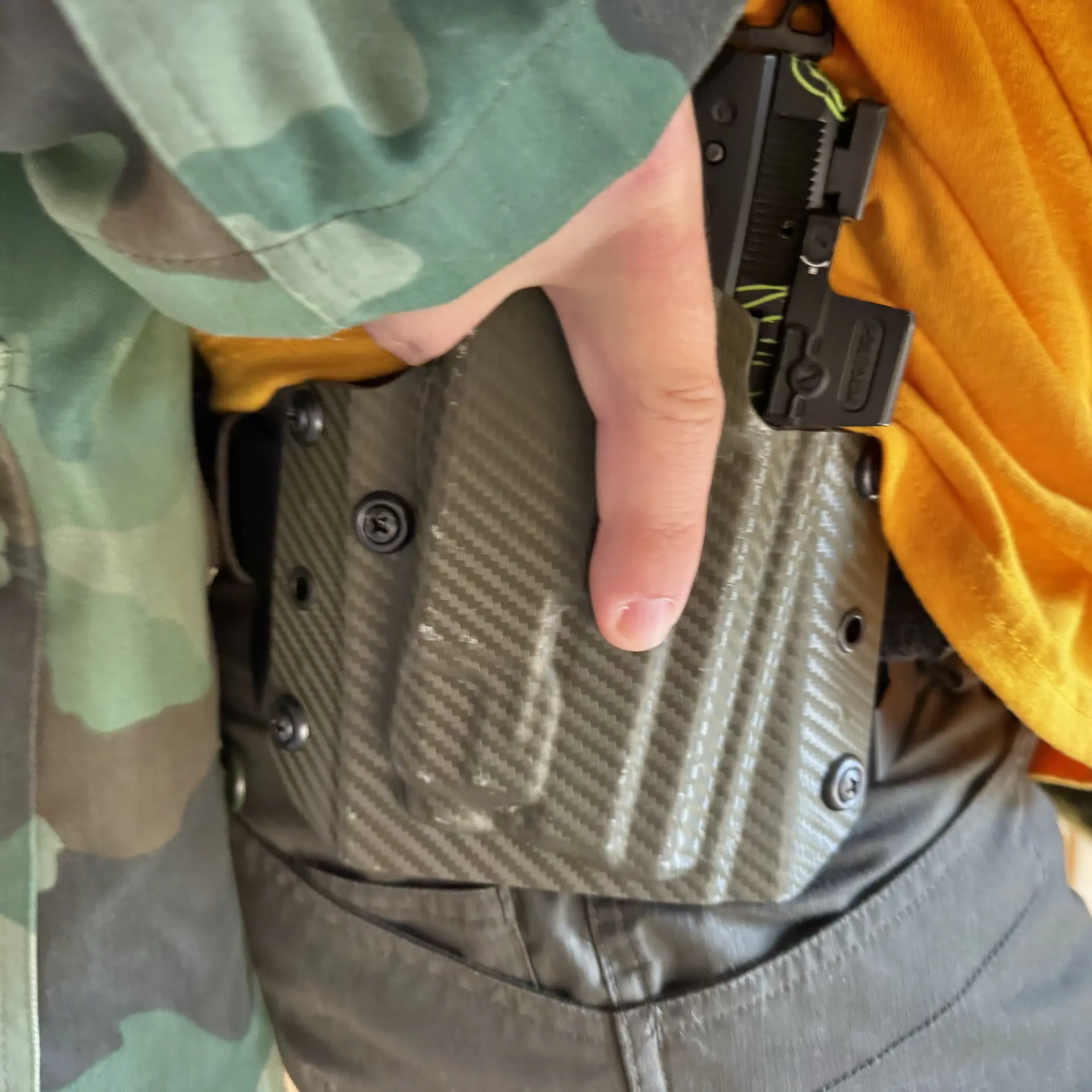
The key to successful strong side carry in winter is practicing your draw stroke regularly. Heavy jackets, especially those made from thick or stiff materials, can obstruct your draw if you’re not careful. It’s essential to familiarize yourself with how your jacket interacts with your firearm and practice drawing with the jacket both open and closed. A well-fitted, easy-to-move-in jacket makes all the difference.
Shoulder Holsters: A Winter Favorite
Another popular carry option that many shooters opt for in the winter is the shoulder holster. Shoulder holsters are often impractical in warmer months due to the lack of sufficient layers to cover them, but in the winter, they become a viable and comfortable option. If you’ve ever thought about trying a shoulder holster but were worried about concealment, now’s the time to give it a go.
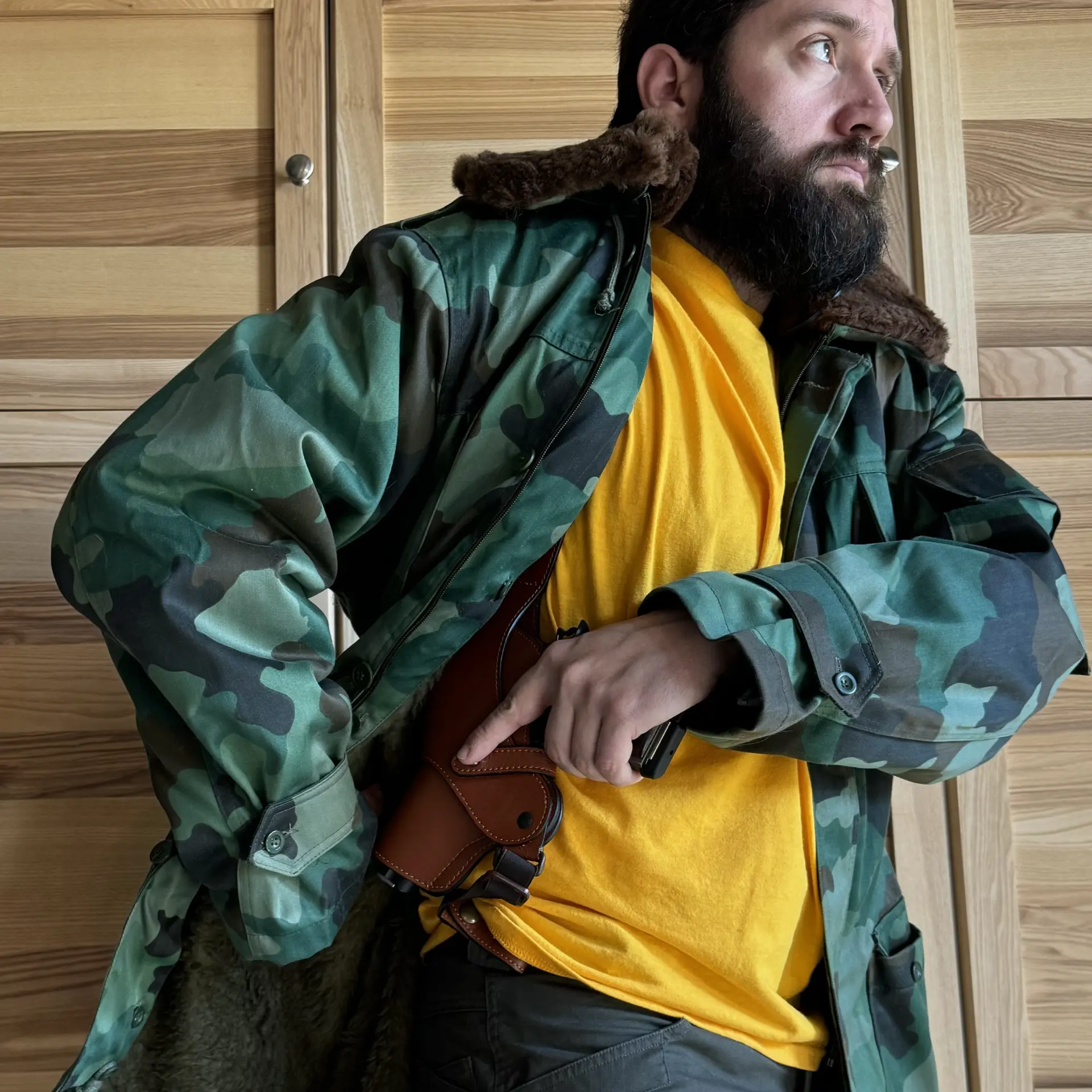
I prefer a leather shoulder holster that carries my pistol in a vertical position. This vertical setup minimizes printing, as the length of the pistol runs along the line of my torso rather than sticking out horizontally. It also has the added benefit of preventing me from flagging bystanders with the muzzle when I move or sit down. This makes it a much safer and more considerate way to carry a firearm, especially in crowded public spaces.
Shoulder holsters also allow you to carry additional magazines or other accessories on the opposite side, balancing the weight across your shoulders. However, as with any carry method, practice is crucial. Drawing from a shoulder holster is a different motion than drawing from a hip holster, and it’s important to get comfortable with this movement—particularly while wearing heavier winter clothing. Take the time to practice drawing from your shoulder holster with your coat on to ensure you can do so quickly and safely.
The Importance of Dry Fire Training
No matter what carry method you choose, practicing your draw with your winter clothing is essential. Drawing from concealment is already a skill that requires muscle memory and repetition, but adding thick winter layers adds an extra layer of complexity. Some jackets make it easy to sweep them aside and access your firearm, but others—especially those with zippers—can create obstacles that you need to account for.
One common issue is the difficulty of drawing from a jacket that is fully zipped up. If your jacket is zipped and tight fitting, it can be nearly impossible to reach your firearm quickly in a defensive situation. This is why it’s important to practice drawing with your jacket in various positions, both open and closed. If you wear a zipper jacket, consider carrying it with the zipper partially down to give yourself quicker access in an emergency.
Additionally, bulky winter gloves can make accessing your firearm more challenging. If you plan on wearing gloves while carrying, practice drawing with them on to ensure you can still manipulate your holster, grip, and trigger effectively. If you find that your gloves make it too difficult to draw safely, consider opting for thinner gloves or ones with a design that offers better dexterity.
Practice, Practice, Practice
Ultimately, the key to successful concealed carry in the winter—or any season—is practice. Whether you’re switching to a different carry method, using a larger firearm, or simply adapting to the extra layers, you need to get comfortable with your setup. Dry fire practice at home is an excellent way to build muscle memory and refine your draw stroke. Start by practicing with your jacket open, then gradually move to closed-zipped practice.
Also, take the time to evaluate your winter carry setup. Does your holster work well with your jacket? Are you able to draw efficiently with your winter gear on? If the answer to any of these questions is “no,” consider tweaking your setup to ensure it’s practical and reliable. Your winter carry should not just be comfortable but also effective in case of an emergency.
Conclusion
Winter is a great time to explore new carry methods and carry larger firearms that may be impractical in the warmer months. The extra layers of clothing provide ample concealment, allowing you to confidently carry OWB or even use a shoulder holster. I personally prefer strong side carry with my TFirearms OWB kydex holster for the best combination of comfort and concealment, but the shoulder holster is another solid option, particularly for those who want to carry in a way that minimizes printing. We’ll do a future post about pocket carrry as this is also a popular winter carry method but this post is already long enough as is.

Remember, no matter what method you choose, practice is key. Take the time to practice drawing with your jacket both open and closed, and make sure you’re familiar with how your winter gear affects your draw stroke. The last thing you want is to struggle with your jacket when you need your firearm the most. With the right preparation, you’ll be ready to carry confidently and safely throughout the winter months.
Stay warm, stay safe, and see you next time for Tech Tip Tuesday!
